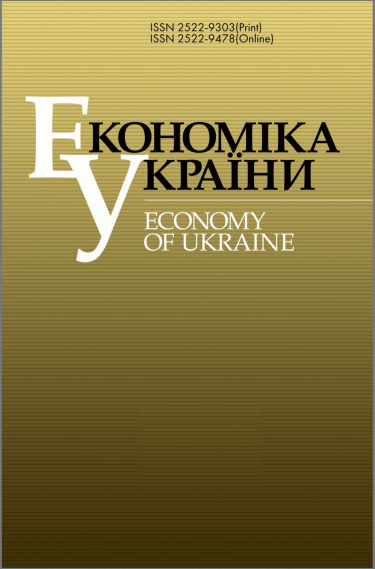ECONOMIC POTENTIAL OF USING ARTIFICIAL INTELLIGENCE TECHNOLOGIES TO OPTIMIZE FINANCIAL MANAGEMENT OF LOCAL COMMUNITIES IN UKRAINE
DOI:
https://doi.org/10.15407/economyukr.2025.03.003Keywords:
economic potential; forecasting; local budgets; artificial intelligence; machine learning; large language models; RAG; local LLMAbstract
The economic potential of using artificial intelligence technologies to optimize financial management of local communities is substantiated. The study outlines the potential opportunities and advantages of using large language models (LLM) in combination with retrieval-augmented generation (RAG) technology. These technologies aim to introduce a new level of interaction between specialists of local financial authorities and the "knowledge base" accumulated through financial, management, and accounting documents. This "knowledge base" is part of document management in conducting public administration activities by territorial communities. Examples of using artificial intelligence tools in public finance management of foreign countries are considered. Vectors of increasing the economic potential of using artificial intelligence technologies in public finance management are identified. The existing local LLM and RAG solutions are analyzed, and their features, advantages and disadvantages are identified.
The conceptual architecture of RAG with local LLM is proposed in the context of these technologies' use by local financial authorities as an add-on to electronic document management. The prototype software application is developed, demonstrating the operation mechanism of the proposed architecture and the functionality of the RAG model prototype with integration into the local LLM Ollama model. Potential risks of implementing artificial intelligence technologies in the public finance management system are identified and measures are proposed to eliminate or minimize them. A significant economic potential exists in this technology, which can transform public finance management, especially at the local level. The use of these tools contributes to substantial improvement in the efficiency of public administration, automation of routine processes, and analytics, which in turn allows for more accurate forecasting of budget indicators and optimization of resource allocation.
References
Kummamuru, K., Tata, S., Dasappa, G., Li, C.-S., Shivaram, M., Chenna, V. et al. (2019). Artificial intelligence-based document processing. Official Journal of the Patent Office. 424 p. URL: https://www.ipindia.gov.in/writereaddata/Portal/IPOJournal/1_4816_1/Part-1.pdf
Yen-Chia, H., Ting-Hao, K., Verma, H., Mauri, A., Nourbakhsh, I., Bozzon, A. (2022). Empowering local communities using artificial intelligence. Patterns. Vol. 3. Iss. 3. P. 1-7. https://doi.org/10.1016/j.patter.2022.100449
Serey, J., Quezada, L., Alfaro, M., Fuertes, G., Vargas, M., Ternero, R., Sabattin, J. et al. (2021). Artificial intelligence methodologies for data management. Symmetry. 13(11). 2040. https://doi.org/10.3390/SYM13112040
Sambetbayeva, M., Kuspanova, I., Yerimbetova, A., Serikbayeva, S., Bauyrzhanova, S. (2022). Development of intelligent electronic document management system model based on machine learning methods. Eastern-European Journal of Enterprise Technologies. 1(2(115)). 68-76. https://doi.org/10.15587/1729-4061.2022.251689
Heyets, V. (2004). Formation of the revenue part of the budget: results, problems and prospects. Economy and Forecasting. No. 1. P. 9-30. URL: http://eip.org.ua/docs/EP_04_1_09_uk.pdf [in Ukrainian].
Lunina, I., Kyrylenko, O., Luchka, A. et al. (2010). Diversification of local government revenues. Ed. by I.O. Lunina. Kyiv, Institute for Economics and Forecasting. URL: http://dspace.wunu.edu.ua/bitstream/316497/12272/1/Lunina.pdf [in Ukrainian].
Riabokin, M., Blyuma, O., Kotukh, Ye. (2024). Methodological and software support for the implementation of electronic document circulation at the level of local budgets using the “ISC Local budget” software. Finance of Ukraine. No. 5. P. 71-91. https://doi.org/10.33763/finukr2024.05.071 [in Ukrainian].
Kotukh, Ye., Korobchynskyi, M., Riabokin, M., Blyuma, O., Denysiuk, O. (2024). Methods and tools for forecasting the cash flow of local budgets using artificial intelligence. Scientific Notes of Ostroh Academy National University, "Economics" series. 33(61). 47-61. URL: https://journals.oa.edu.ua/Economy/article/view/4109 [in Ukrainian].
Arntz, M., Gregory, T., Zierahn, U. (2016). The risk of automation for jobs in OECD countries: A comparative analysis. OECD Social, Employment and Migration Working Papers. No. 189. URL: https://www.oecd-ilibrary.org/social-issues-migration-health/the-risk-of-automation-for-jobs-in-oecd-countries_5jlz9h56dvq7-en?mod=article_inline
Lewis, P., Perez, E., Piktus, A., Petroni, F., Karpukhin, V., Goyal, N., Küttler, H. et al. (2020). Retrieval-Augmented Generation for Knowledge-Intensive NLP Tasks. In: Proceedings of the 2021 AAAI/ACM Conference on AI, Ethics, and Society. P. 5998-6008. https://dl.acm.org/doi/abs/10.5555/3495724.3496517
Downloads
Published
How to Cite
Issue
Section
License
Copyright (c) 2025 Publisher PH "Academperiodyka" of the NAS of Ukraine

This work is licensed under a Creative Commons Attribution-NonCommercial-NoDerivatives 4.0 International License.



